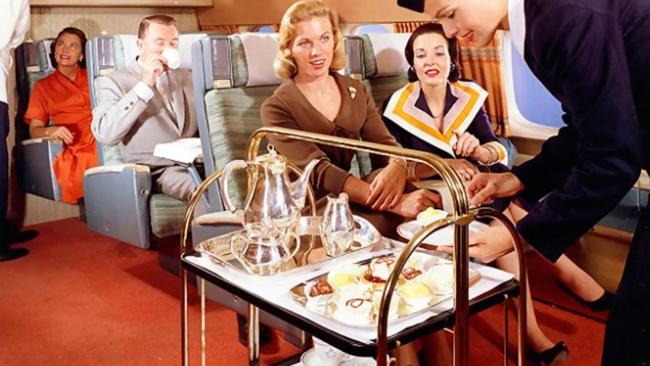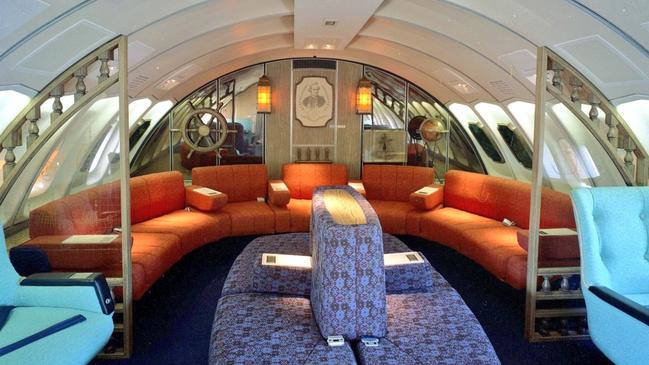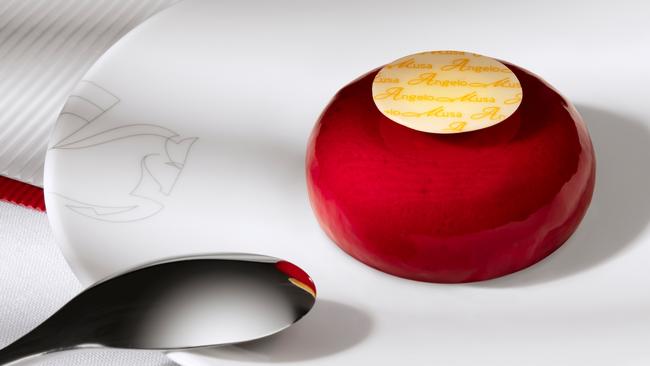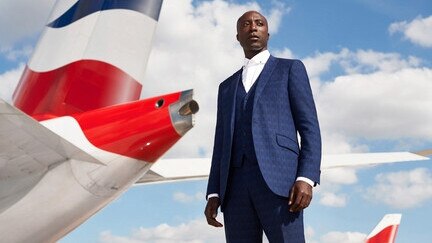First-class cabins in the golden age of travel
Commercial air travel has come a long way since the 1950s and 1960s but is something lacking even at the pointy end of the plane?

Aviation nostalgics often point to the golden age of travel, the period from the 1950s to the 1970s when flying first class was indisputably classy. During the jetliner era, champagne came in crystal coupes, couture-clad flight attendants served meals on fine china, and back-slapping passengers milled around cocktail bars hovering at 30,000 feet. By the 1980s, as airlines began to engage in a pitiless game of musical chairs to maximise profits, jet-setting lost much of its lustre.
Nowadays, companies are phasing out first class – it’s a challenging product to sell and cashed-up travellers can fly private instead. It’s also overshadowed by the expansion of the business category and edged out by a focus on smaller, more sustainable aircraft. That said, there is still life at the pointy end of the plane. As long as there is cachet in an opulent top-tier experience, airlines will explore it as a branding strategy. How do these offerings compare to yesteryear? We take a look.

The cabin
Then: “Sleeperettes” could convert into flat beds, and some airlines offered separate compartments for privacy, but the pervasive mood was convivial, conversational and decidedly fun. In-flight entertainment referred to card games, fashion shows and live music (American Airlines even had a piano bar). Passengers were snappily attired and onboard luggage was yet to appear – there were no overhead compartments.
Now: Flying first class is not merely about separation from the hoi polloi but other wealthy travellers, too. The leaders in the category, including Singapore Airlines and Emirates, have long championed sliding doors – effectively cocooning passengers from everyone else – as well as ambient lighting and cinematic screens. Qantas’ new A350s, arriving in 2025, will feature enclosed cabins in first class and a sliding door for business class.

Cocktail hour
Then: Pan American World Airways, or Pan Am, was a trailblazer when it came to fostering buzzy lounge areas on the upper deck with swivel chairs, swizzle sticks and zinging patterned upholstery. The Captain Cook lounge, on the upper deck of the first Qantas Boeing 747s, was a swell space with vibrant seating, nautical decorations and party-like canapes. “They were the good old days,” says Annie Oeding, who began her career with Qantas in the early 1970s. “People were standing around conversing with other passengers, and we got to interact with them, too. Now people sit there with headphones on staring at the screen.”
Now: Numerous airlines have bar areas but they’re lacklustre in comparison. Accessible to first and business class passengers, Qatar’s version has sleek banquettes, top-shelf tipples and bite-sized treats, but still looks as clinical as a dentist’s office. Emirates’ A380 lounges have horseshoe-shaped bars, wood grain accents and leather seating. You might nibble on falafel and sip on Dom Pérignon here, but you wouldn’t be inclined to linger. Perhaps the jazziest contender is Virgin Atlantic whose pink-coloured bars resemble the VIP section of a nightclub.

Dinner is served
Then: Pan Am featured ice swans, beluga caviar and culinary direction set by acclaimed restaurant Maxim’s of Paris. At one point in the seventies, the airline had a dining room on the Boeing 747 complete with linen-dressed tables, polished silverware and Rosenthal plates. Another innovator was Concorde, the supersonic airliner, which arrived in 1969. On its flights from Europe to the US, meals were theatrical multi-course affairs with flight attendants serving lobster and carving chateaubriand.
Now: We’ve gone from Mad Men to incensed passengers who dissolve when their pescatarian selection is not available. To alleviate the tastebud paralysis that happens while aloft, leading airlines have tapped bold-face chefs to create flavourful menus suitable for picky eaters. In the recent Skytrack World Airline Awards, Air France ranked number one for its first-class catering. The latest menus for its La Première category are by chef Régis Marcon and include rarefied offerings like pigeon fillet with apricot sauce, and sea bream with verbena and spinach. It sounds like a carte from the seventies.

Style statements
Then: Passengers dressed up to the nines and so did the staff. Christian Dior, Chanel and Pierre Balmain were enlisted to design crew uniforms for Air France, Olympic Airways and Singapore Airlines respectively. Keith Lovegrove’s 2013 book, Airline: Style at 30,000 Feet, brims with glamour shots of “air stewardesses”, as they were known, garbed in fuchsia-coloured jackets and skirts, electric tights and matching chapeaus by Emilio Pucci. Nowadays, as the author points out, airlines endeavour “to be appealing to everyone without offending anyone”, which lacks flair.
Now: Most cabin crew attire is fairly dreary, uninspired and uncomfortable looking. One stylish outlier is British Airways. Earlier this year, the airline unveiled smart new uniforms designed by Savile Row tailor Ozwald Boateng. Cut from a bespoke navy fabric with an airwave pattern, the collection features a tailored three-piece suit for men, dress, skirt and trouser options for women, as well as a chic jumpsuit. And the passengers? Even in first class, athleisure brands like Lululemon dominate the skies, resulting in a dishevelled look. But perhaps airlines encourage this by dispensing pajamas and slippers.
In the end, flying might be far safer, more reliable and less smoke-filled in this era, but the vestiges of glamour seem forever lost.

To join the conversation, please log in. Don't have an account? Register
Join the conversation, you are commenting as Logout